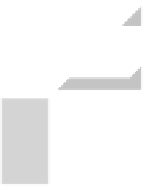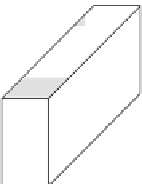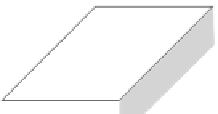Civil Engineering Reference
In-Depth Information
11.1.3 Classical Bending Process (Force and Springback)
The geometry of the bending tooling and the coordinate system are shown in
Fig.
11.2
. The model development starts with an analysis of the state of strain and
stress in the bending zone under plane strain conditions, using the volume con-
stancy assumption and flow rules. The width of the workpiece is assumed to not
change; thus, the strain in the
y
-direction is zero. The strains and stresses are given
by Eq. (
11.1
).
ε
x
;
ε
y
=
0
;
ε
z
=−ε
x
,
σ
y
=
σ
x
(11.1)
σ
x
;
2
;
σ
z
=
0.
The effective strain and stress are determined using von Mises yield criterion as
given by Eq. (
11.2
).
√
3
2
√
3
ε
x
;σ =
ε =
σ
x
.
(11.2)
The strain in the
x
-direction is solve
d by assum
ing the exact position of the neutral
axis given by Hill et al.,
r
NA
=
. Thus, the strain can be computed
using the engineering strain, given by the change in length of the outer fiber as
compared to the neutral fiber [
3
]. Equations (
11.3
) and (
11.4
) give the strain in the
outer fiber, where
α
is the bending angle.
r
p
r
p
+
t
b
e
x
=
(
r
p
+
t
b
)α −
r
NA
α
r
NA
α
1
+
t
b
r
p
=
−
1
;
ε
x
=
ln
(
1
+
e
x
)
.
(11.3)
F
p
Punch
Workpiece
r
NA
r
p
w
t
b
t
b
r
p
Die
y
x
w
d
z
Fig. 11.2
Geometry of an air bending test [
1
,
2
]. All of the notations that will be used in the fol-
lowing bending equations are provided in the figure










































































